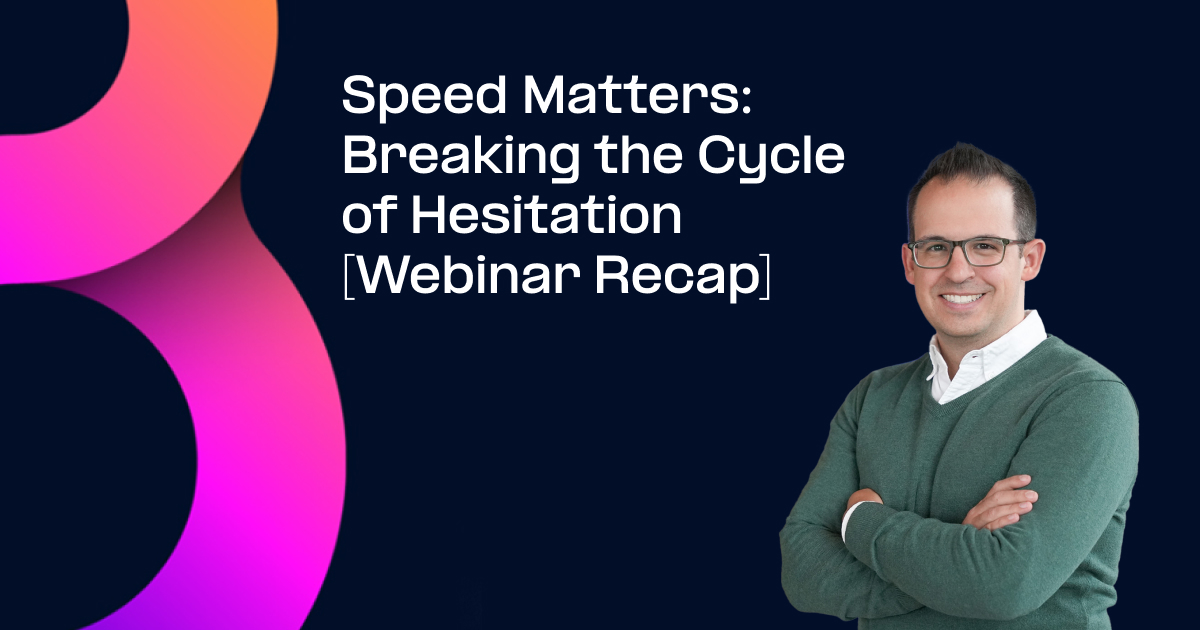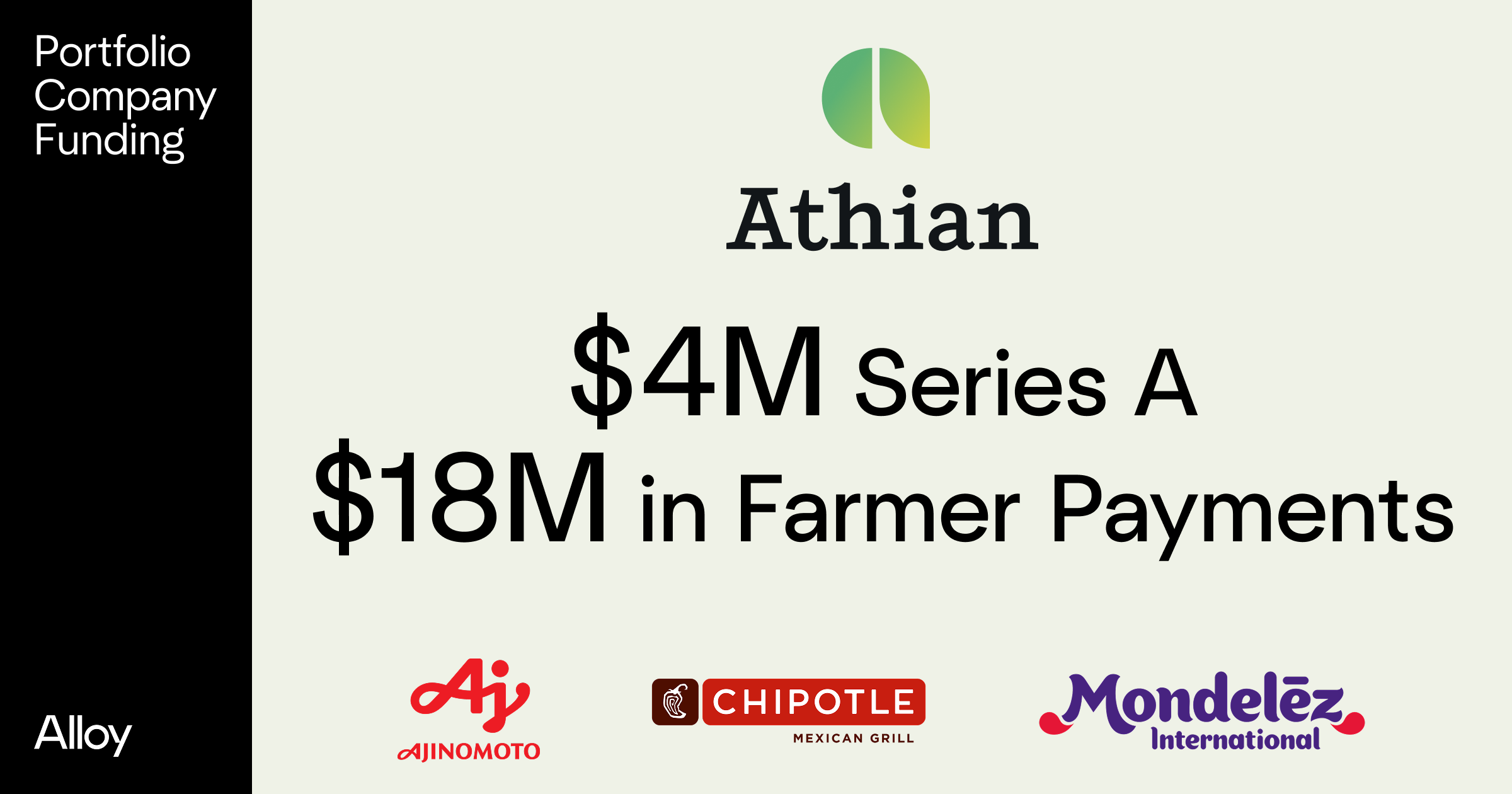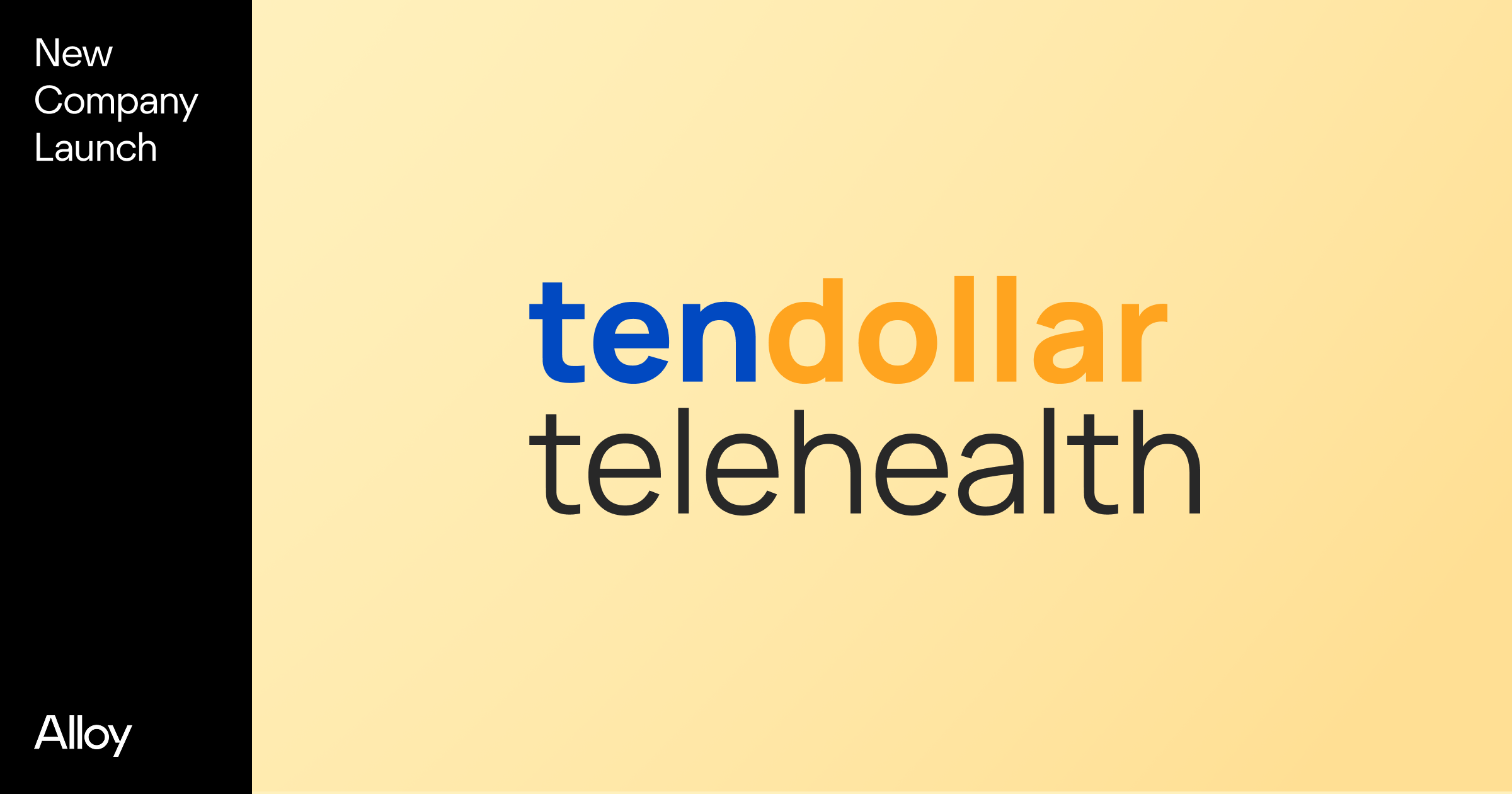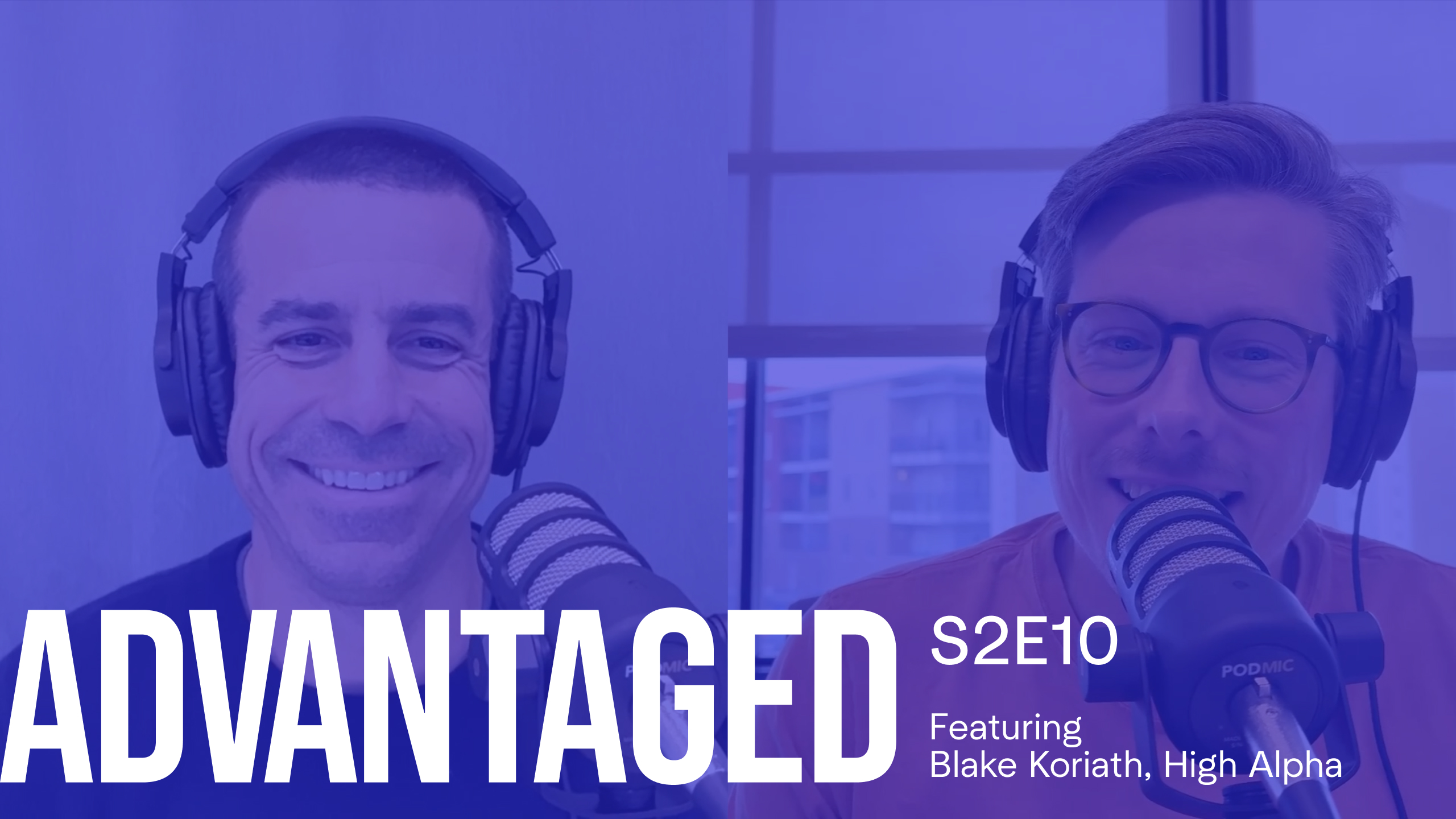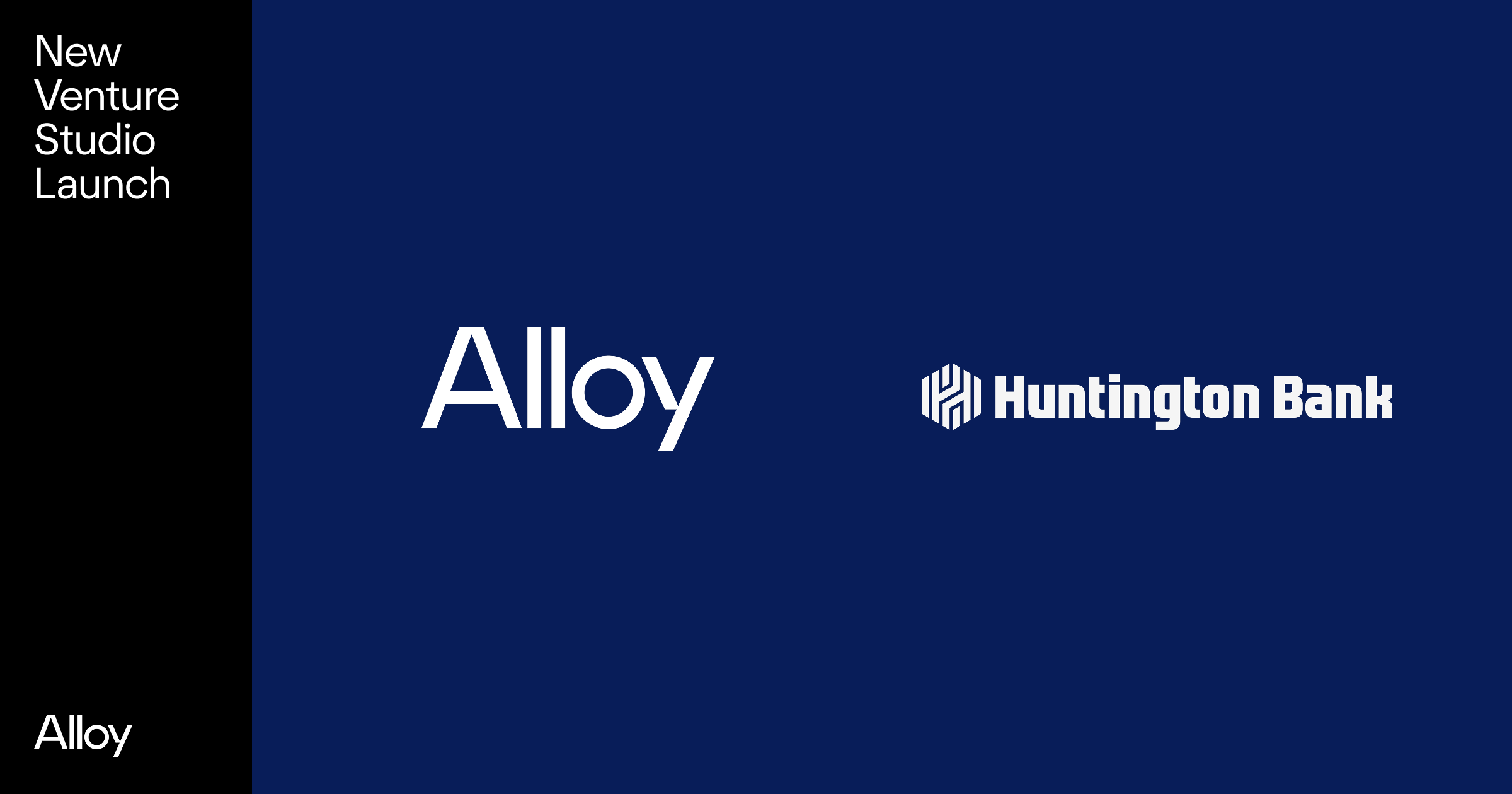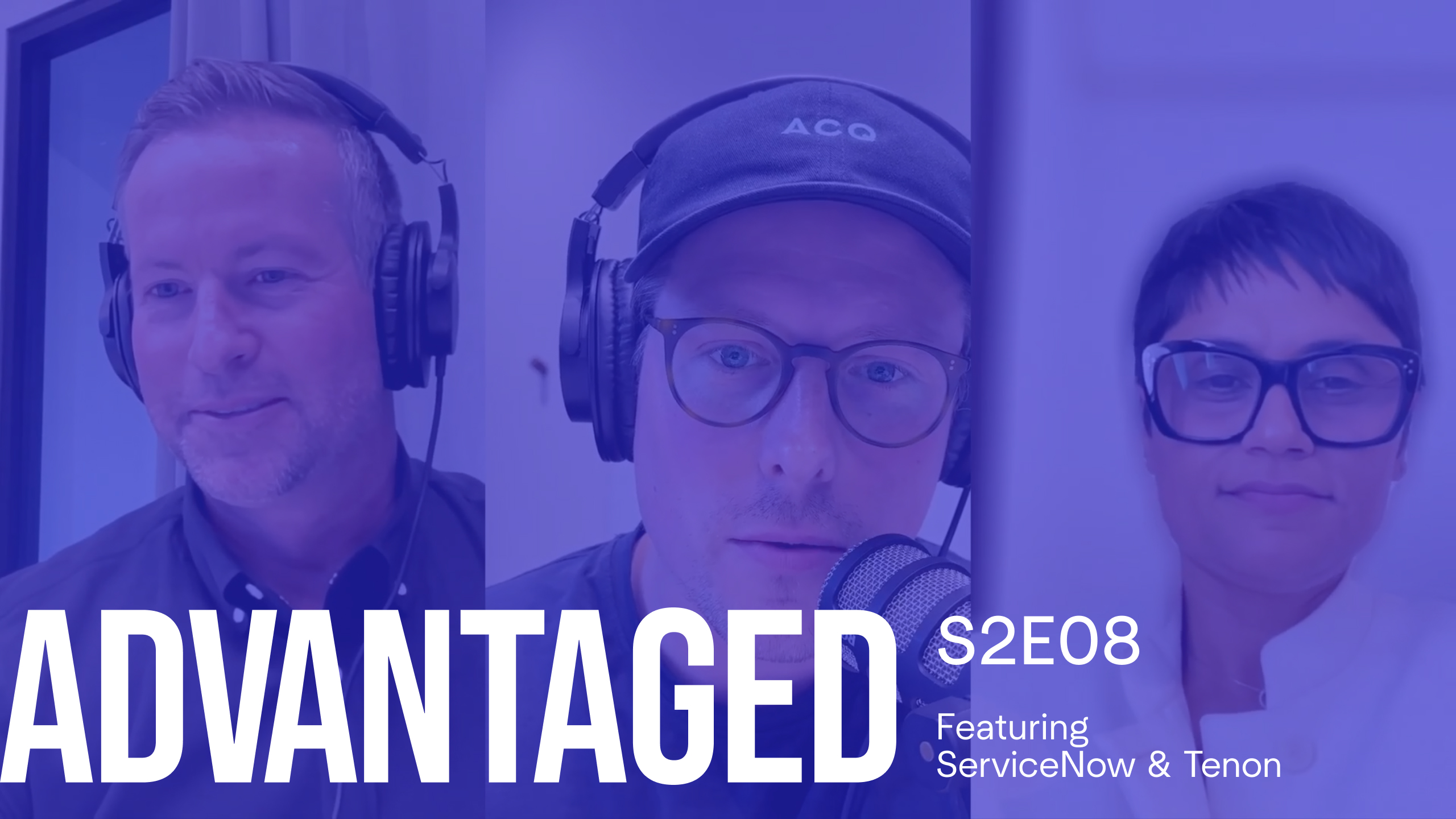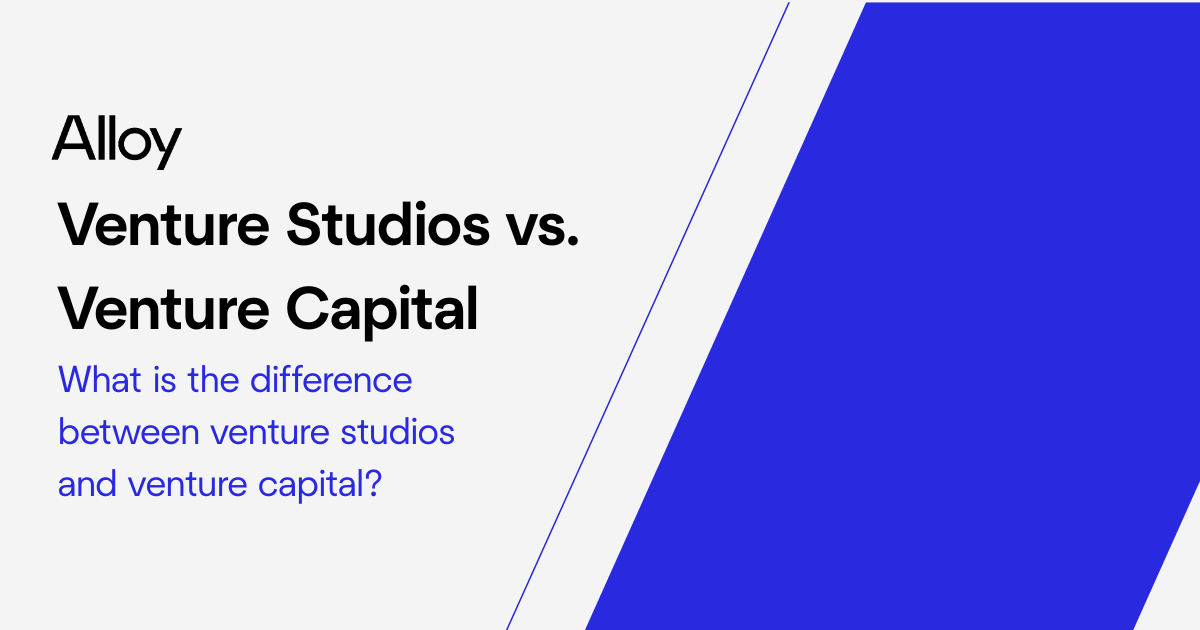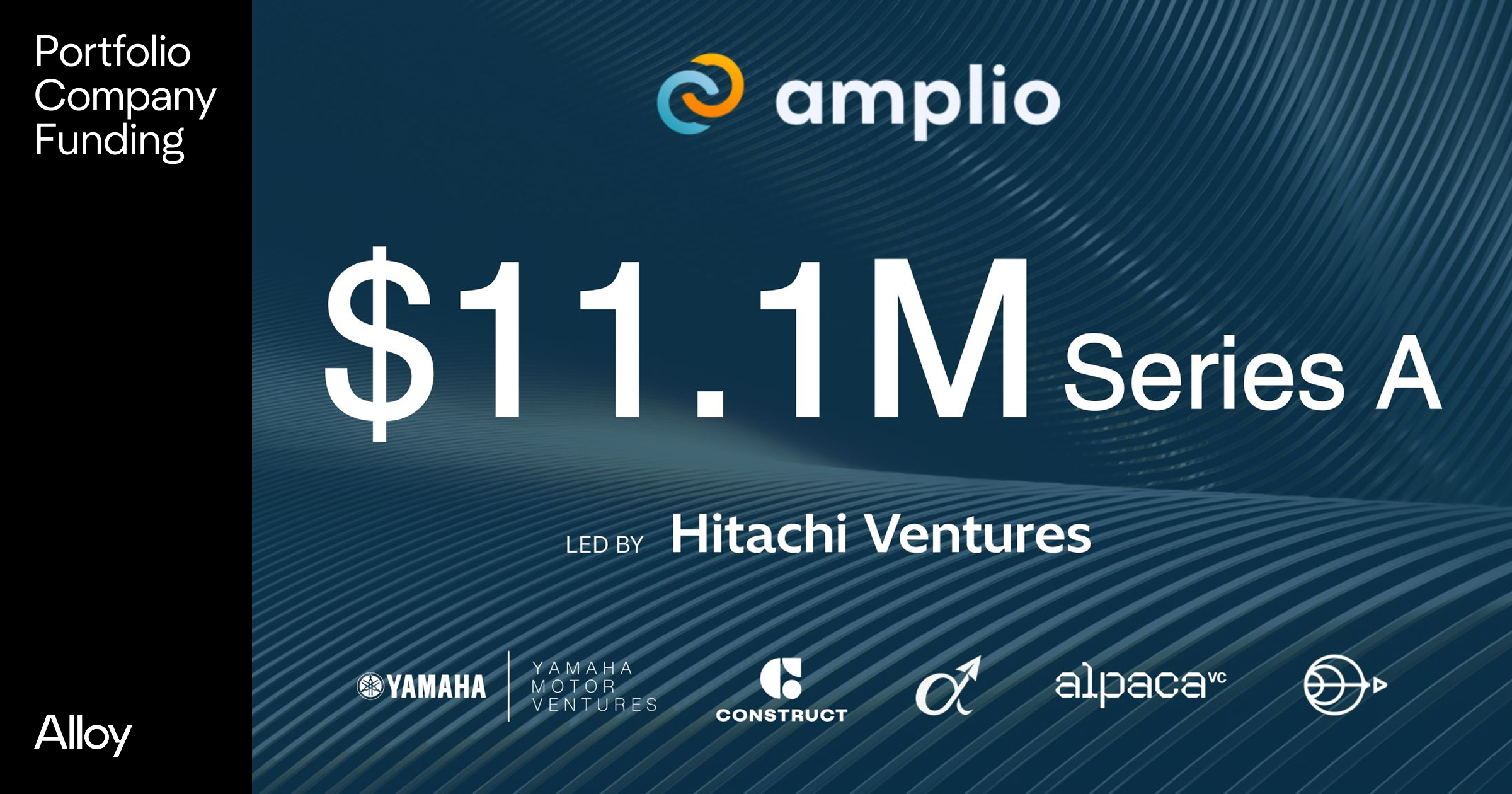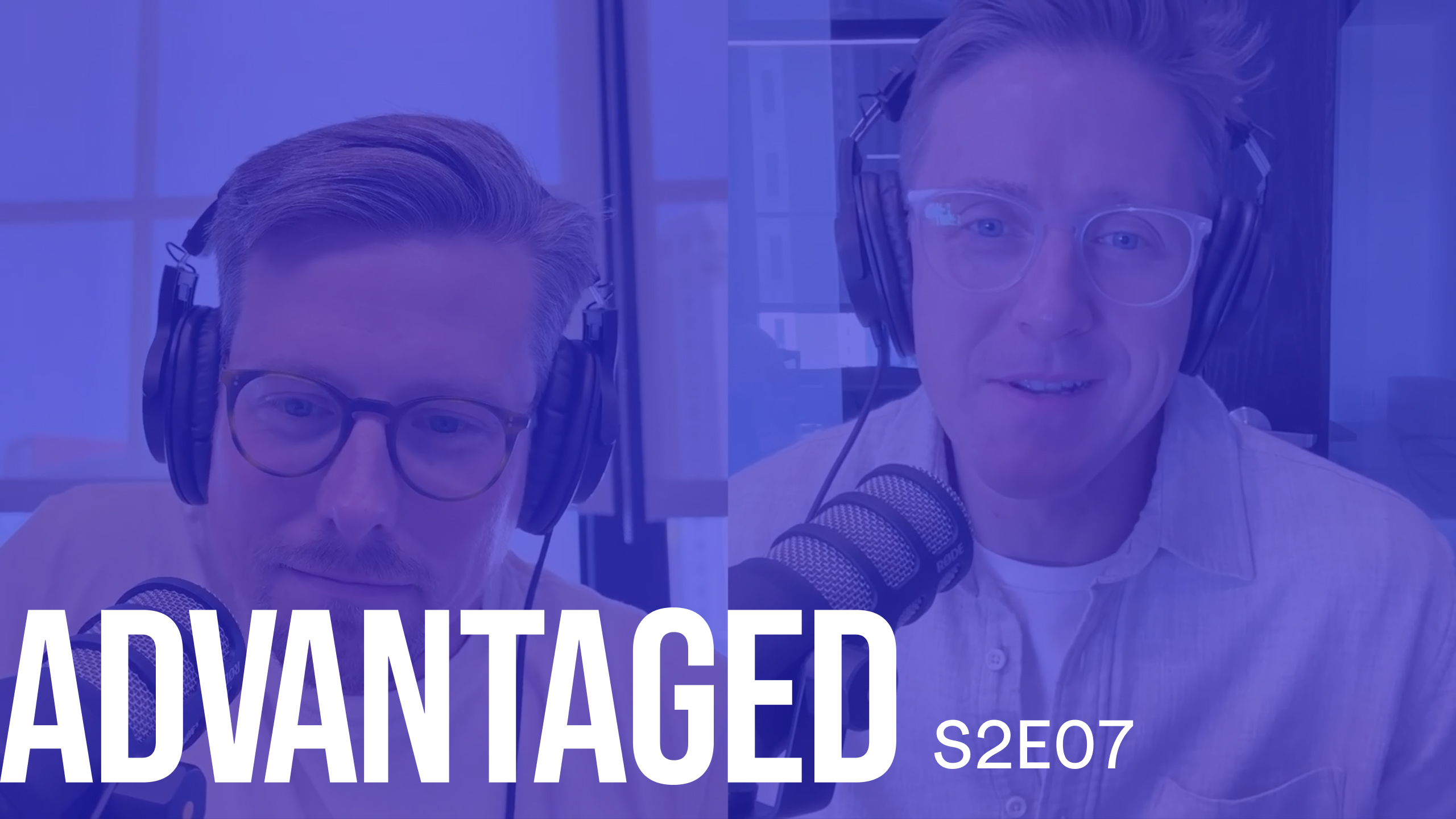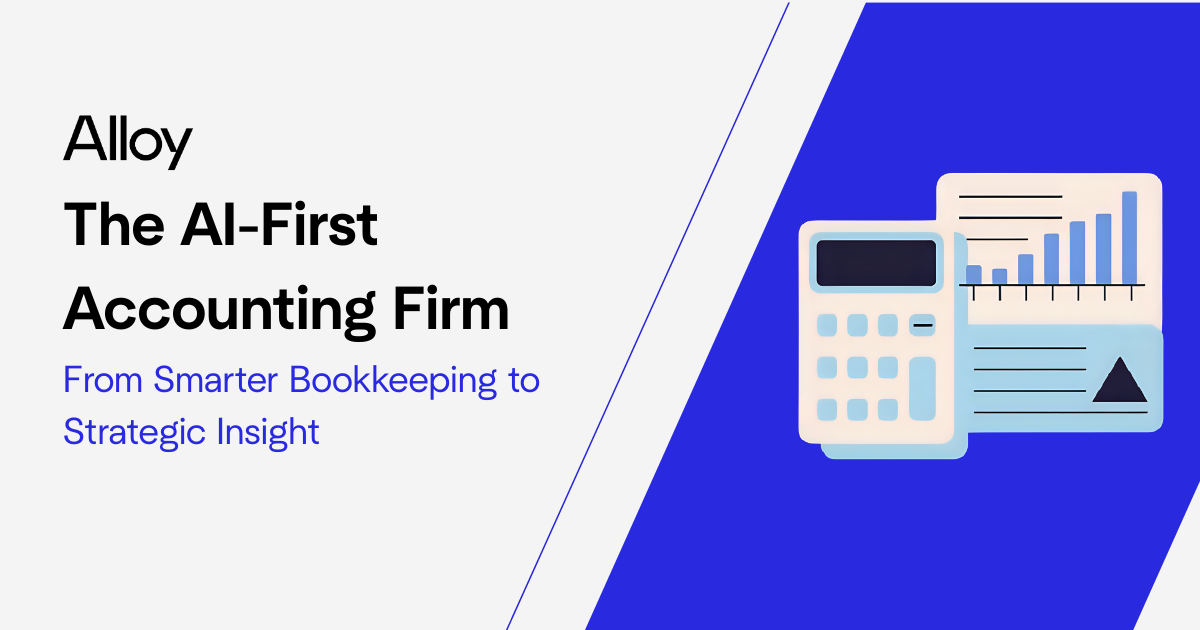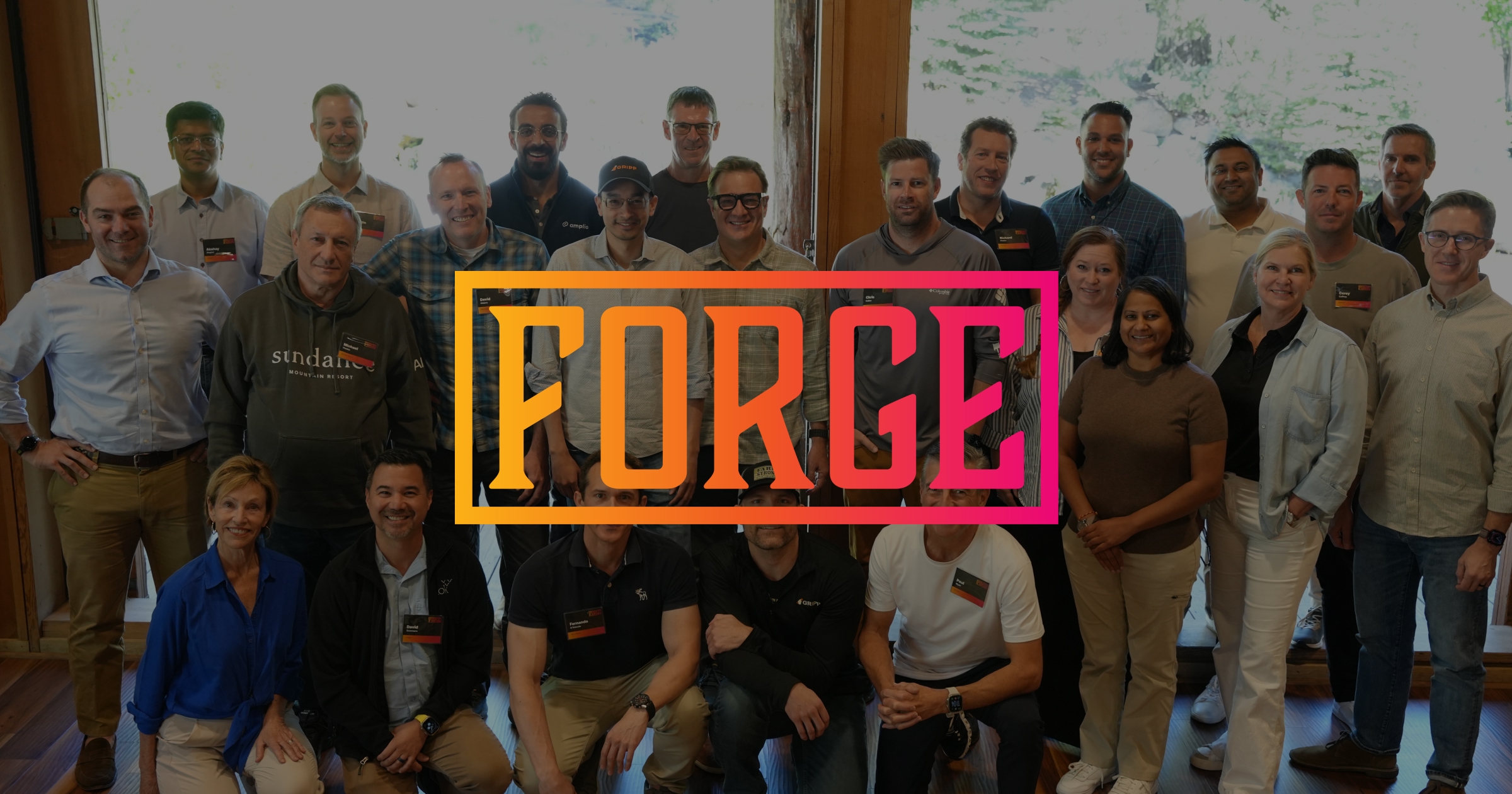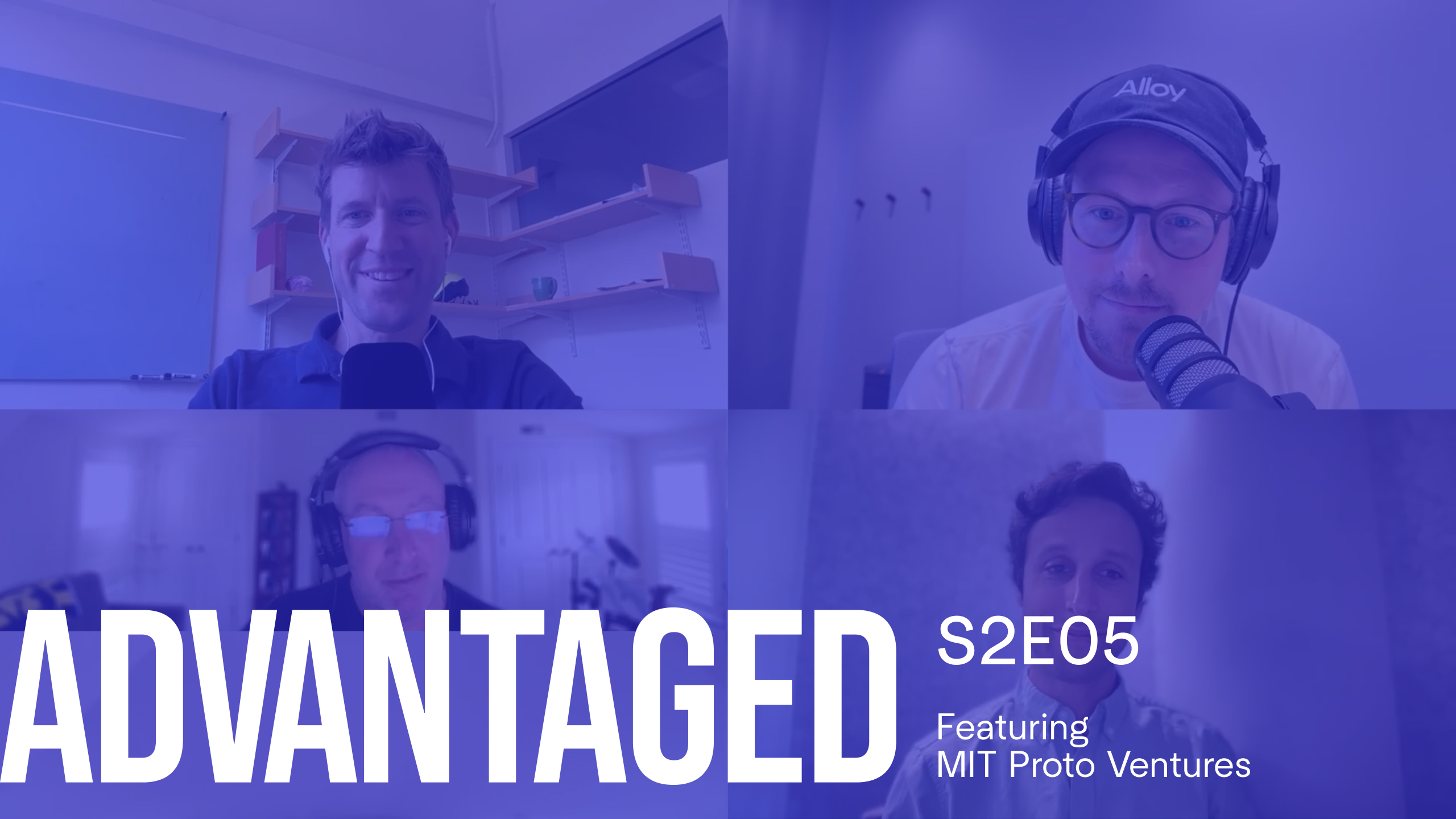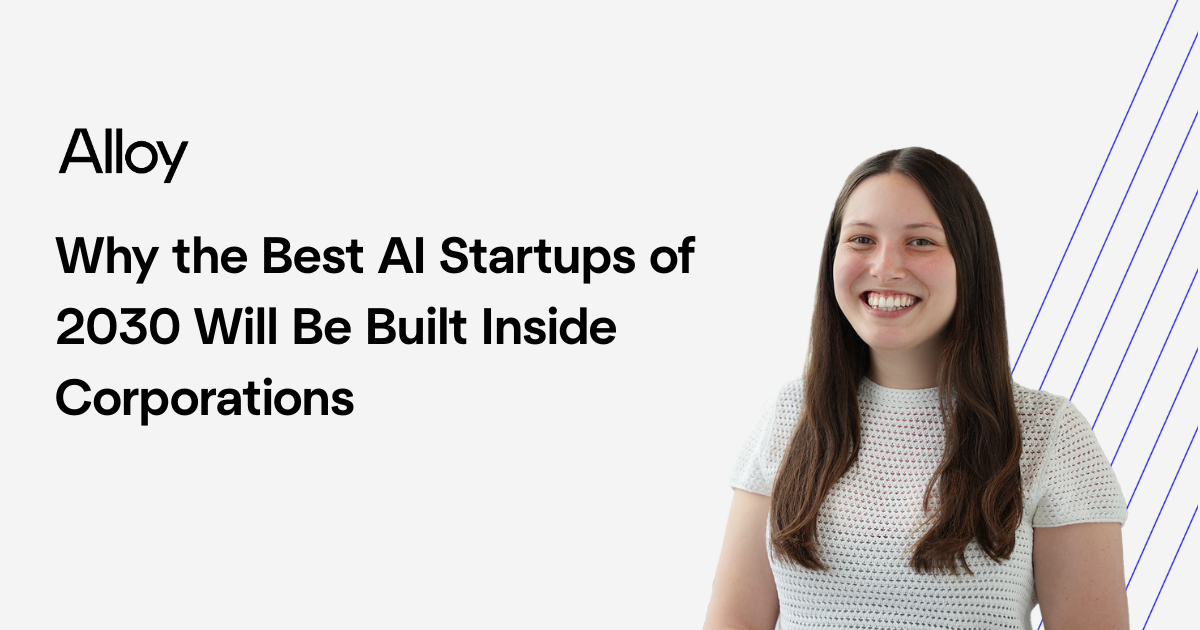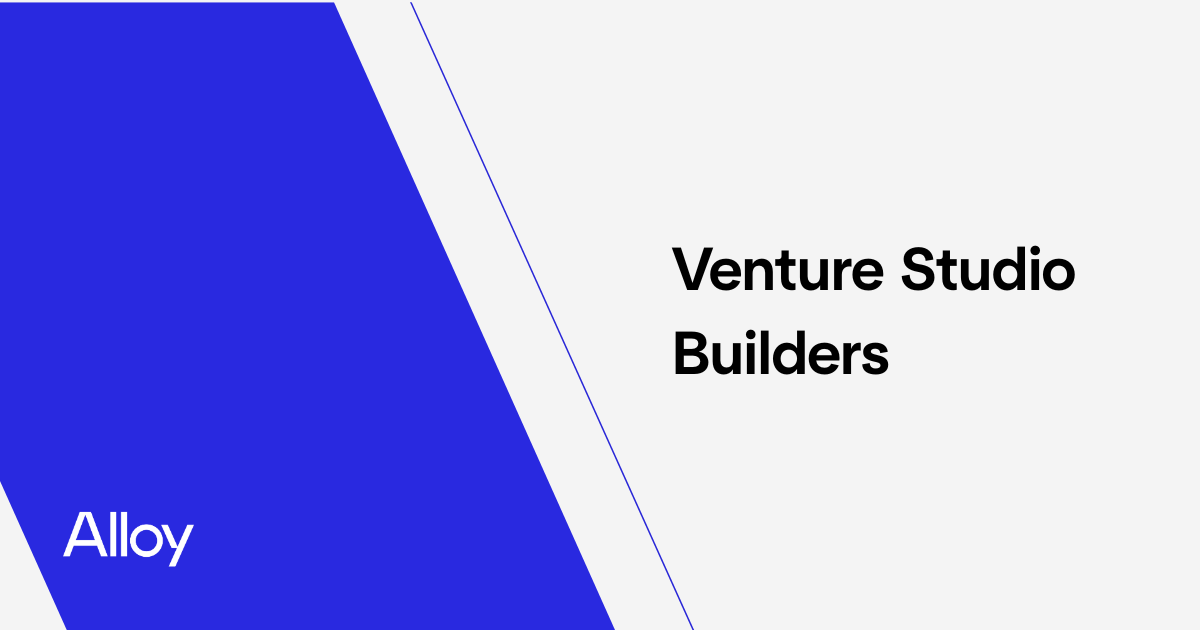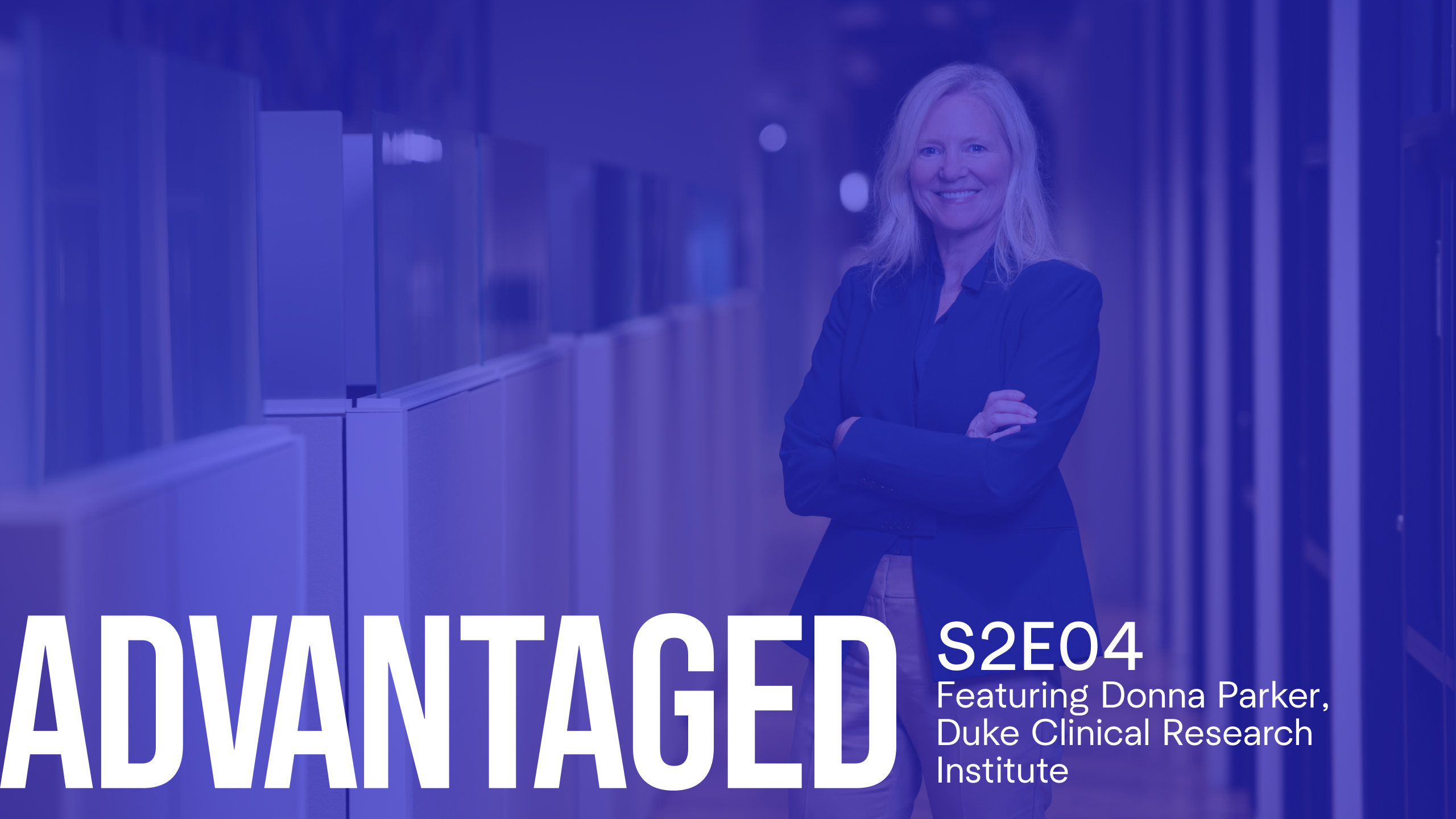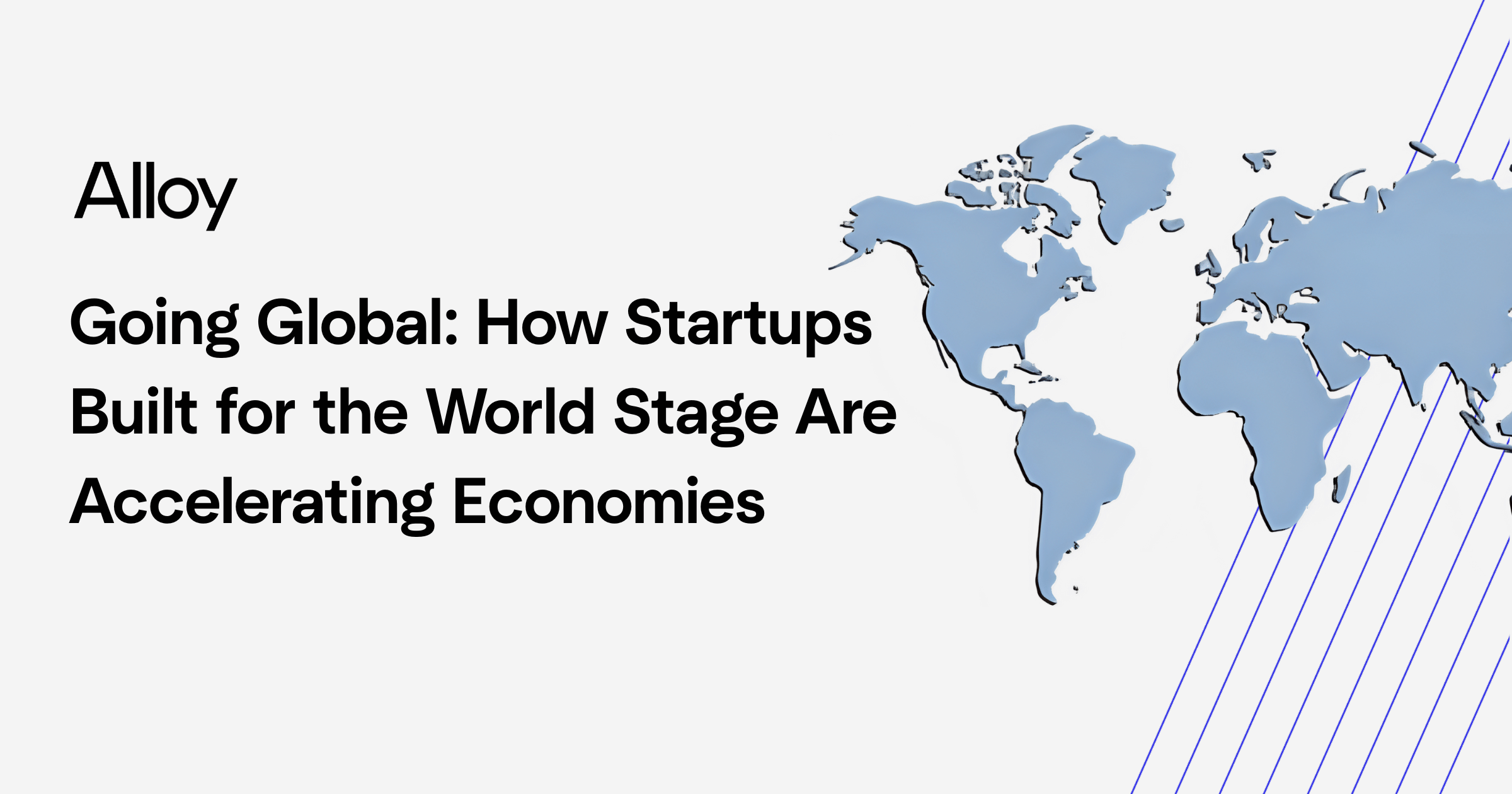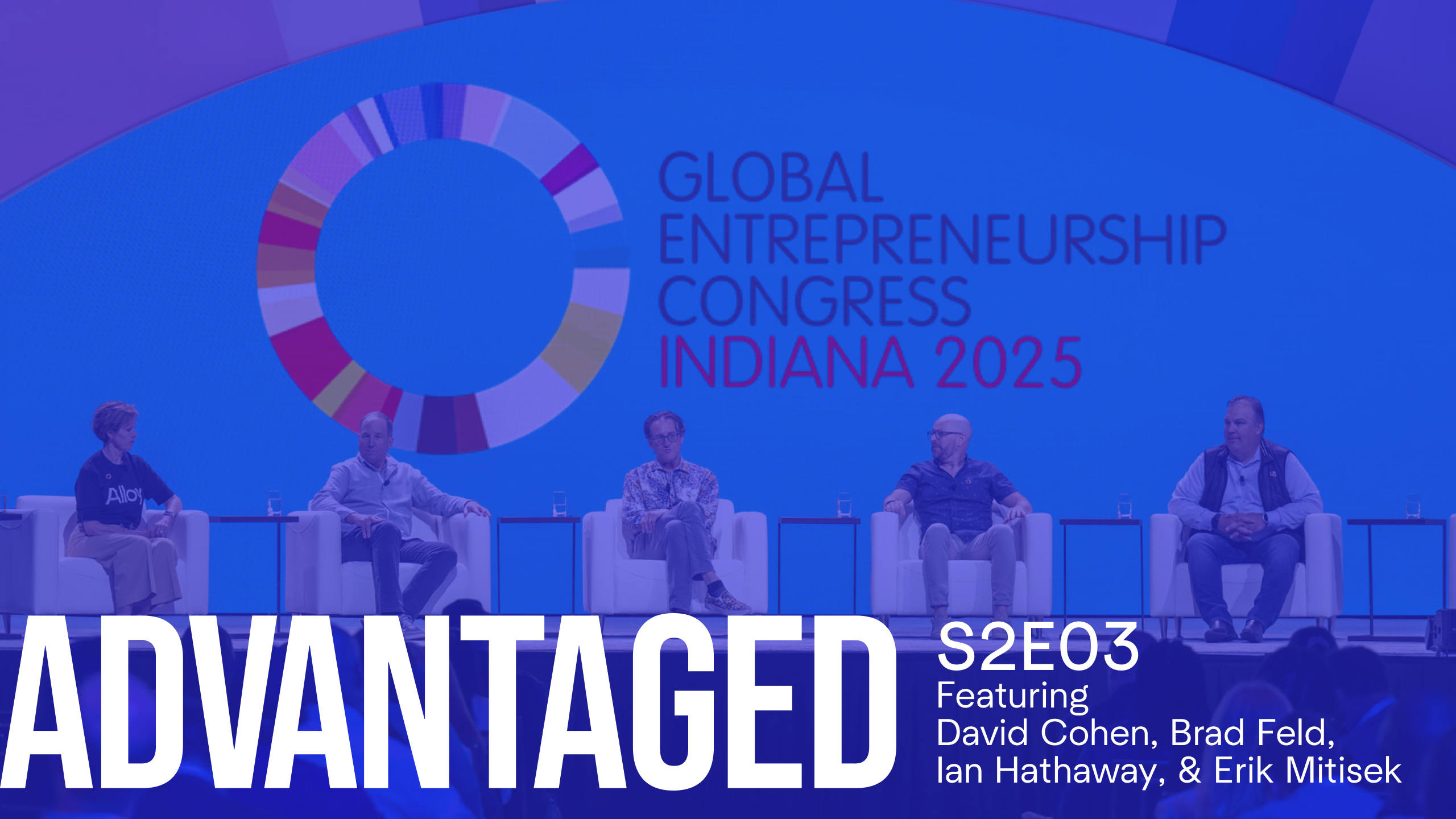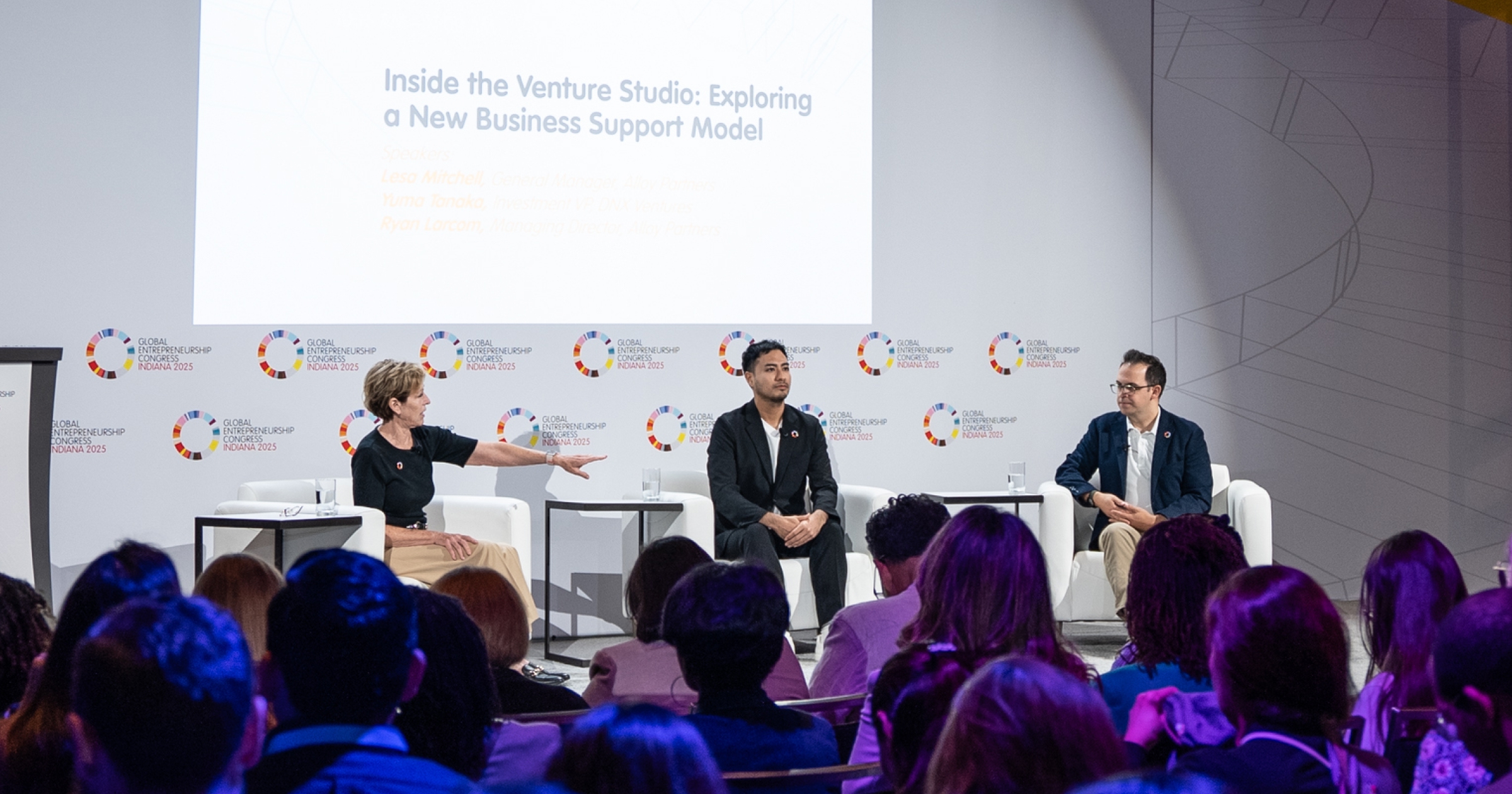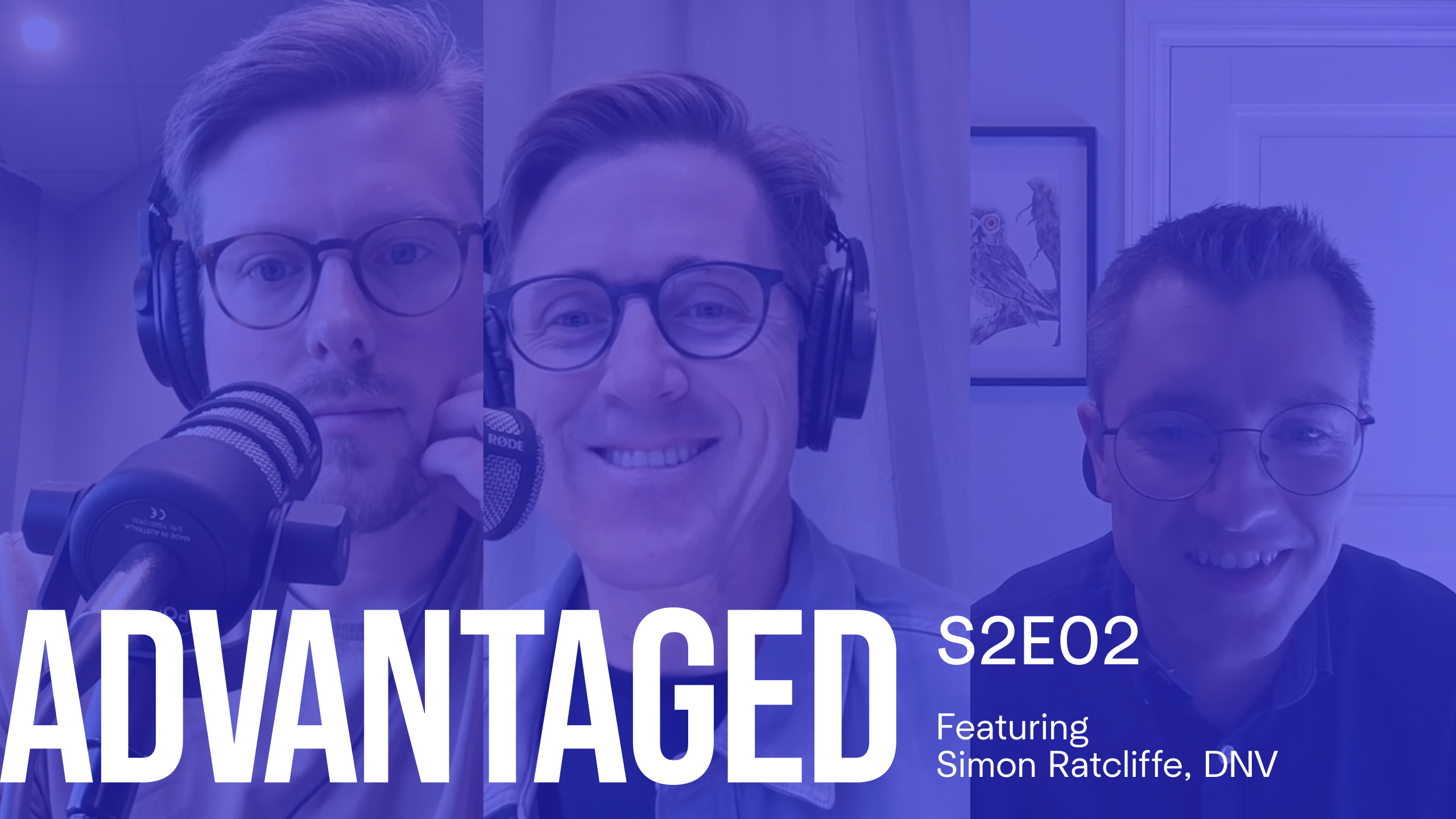A partnership between an established energy leader and a startup can do more than innovate it can accelerate the transition to a cleaner, more circular economy.
On this episode of Advantaged, we are joined by Brian Hartmann, President & CEO of NorthStar Clean Energy, and Todd Thomas, Co-Founder & CEO of Woodchuck, to discuss how the two organizations came together to launch a new venture addressing a major opportunity in clean energy: turning waste into sustainable power generation.
Woodchuck, built in partnership with Alloy Partners and NorthStar, transforms construction and manufacturing waste into clean biomass feedstock. For NorthStar, the collaboration opens a new front in its carbon management strategy and expands its renewable energy portfolio. For Woodchuck, it’s a chance to scale faster with the backing of a seasoned energy operator.
Together, they’re showing how corporate–startup partnerships can unlock advantages neither could achieve alone. Check out the key takeaways and watch the full episode below.
Key Takeaways
- Partnership as a catalyst: NorthStar and Woodchuck prove how corporate–startup collaboration can speed decarbonization and accelerate innovation.
- Venture building drives results: By building with Alloy, NorthStar stood up a new company designed from day one to meet its sustainability goals.
- Turning waste into power: Woodchuck’s model diverts wood waste from landfills and converts it into renewable energy at scale.
- Strategic alignment unlocks speed: Pairing corporate infrastructure with startup execution enables faster validation, scaling, and market entry.
In This Episode
- The founding story behind Woodchuck and its partnership with NorthStar Clean Energy
- Why biomass and carbon management are central to the future of clean energy
- How venture building enables corporates to innovate faster and with lower risk
- Practical lessons on aligning startups and enterprises from day one
Guests
- Brian Hartmann, President & CEO, NorthStar Clean Energy
- Todd Thomas, Co-Founder & CEO, Woodchuck
- Elliott Parker, CEO, Alloy Partners
- Drew Beechler, VP of Marketing & Host, Alloy Partners
Listen to or watch “Building Advantaged Startups to Power the Future (with NorthStar Clean Energy & Woodchuck)” below and be sure to subscribe to Advantaged, the leading corporate innovation podcast, on Apple Podcasts, Spotify, or YouTube.
Transcript
Below is an un-edited transcript from the podcast episode.
Drew Beechler: Welcome
everyone to Advantaged and Alloy Partners podcast. I'm Drew Bechler, our VP of Marketing here at Alloy Partners, and our host of Advantaged Alloy Partners. If you're unfamiliar, is a venture builder, we partner with leading organizations and entrepreneurs to co-create advantaged startups and venture studios that unlock growth and transformation on advantaged.
We interview corporate innovators, founders, leaders, and investors all around venture building and startup corporate partnerships.
We're telling the stories of how corporates and startups win together,
and here today we have myself our CEO at Alloy Partners Elliottt Parker, and two very special guests.
Brian Hartmann, the president of North Star Clean Energy, a wholly owned subsidiary of CMS Energy. And Todd Thomas, the co-founder and CEO of Woodchuck, a climate impact startup, revolutionizing sustainable waste management and green energy
production, and part of the Alloy
Partners portfolio. Thank you both for being with us today and joining us
Todd Thomas: Thanks so much for having me. Really appreciate it.
Drew Beechler: Yeah, to start us both off could you each share just a quick introduction to yourselves and your background prior to what you're doing today? And let's start maybe
Todd, with you first and then to you Brian.
Todd Thomas: Sure. Thanks Drew. So I've got a, an eclectic background across a number of different industries and verticals so the common thread has always been leveraging emerging technologies to drive efficiency. Which works
really well with what we're doing at Woodchuck and what we're seeing.
It's becoming a big focus right now, which is using efficiencies to drive more sustainable outcomes. And that's exactly what we're doing at Woodchuck is, leveraging AI technologies to drive efficiencies and improved costs and reduce waste within waste handling and renewable energy production.
Brian Hartmann: and I'm Brian Hartman, I'm president and CEO of North Star Clean Energy, which is the non-utility
subsidiary
of CMS Energy. I've been in this role for four years, leading our mission to deliver innovative sustainability and energy solutions to our customers.
Before moving into this role, I led corporate strategy across CMS Energy for about three years, where I really focused on shaping the company's long-term direction.
And
then prior to that I was an associate partner at McKinsey and Company working across utilities, energy, and mining.
And
all that experience really gave me a deep appreciation for the challenges and opportunities in the energy transformation.
And now I get to tackle all of that head on at North Star.
Drew Beechler: That's incredible. And Todd, let's start with the founding story behind Woodchuck. Could you share just a little more from your perspective, the founding of Woodchuck
And even where.
Would check us today what you've evolved into.
Todd Thomas: the genesis of Woodchuck really starts with North Star clean energy. North
Star Clean Energy has three facilities in the state of Michigan that have the potential to burn biomass. And they were looking for an a net new,
long-term,
sustainable supply of feedstock so that they can not only produce the energy that the state of Michigan needs today but they also, like many PE are
projecting we need to probably double our global energy production over the next couple of decades. That is absolutely true in the state of Michigan. So North Star Clean Energy was looking for a net new source of biomass to again provide all the energy Michigan needs today, but also to grow with them and double that energy supply over the next couple of decades. When people talk about biomass, people often think of forestry residuals or agricultural residuals. North Star Clean Energy really wanted a new source to allow them real growth. So we formed the hypothesis of woodchuck, which was we believe there is a massive supply of wood inside the construction and manufacturing waste streams. And if we could identify that wood and segregate that wood, it could be a huge long-term supply of clean renewable feedstock for North Star clean energy. The US construction industry alone last year sent 41 million tons of wood to landfills. you look at landfills across the US, they are 30 to 40% wood by volume they are filling up. So woodchuck is really addressing those two huge problems. One is the need to reduce our waste, and the second is to produce more renewable.
energy. So that was the, that was really the genesis. That was what we launched with and what we found. We've now been in the market for almost exactly two years. We launched in October of 2023, and what we found is we are getting great reception from the construction and manufacturing industries. They are thrilled to have a sustainable option before woodchuck. There really aren't a lot of options for diverting waste or reducing your waste. And so we come in and we have this option now to help them divert their waste, really to help them monetize their waste
reduce their cost.
And we're finding that they, they were very welcoming to that idea.
We've now gotten to do some projects for some really fantastic end clients.
We've gotten to do projects for Amazon and for Ford and for Ikea. And we're now getting the feedback from our clients, that the construction companies that their end clients love what we're doing, love the fact that we are reducing their waste, love the fact that we are helping them to monetize their waste.
And
we're turning all of this wood that used to go to the landfill and we're now partnering with North Star Clean Energy to turn that into renewable energy. So our clients are saying, Hey, we love this. We want more of this. We want this on all of our job sites.
So
it's going really well.
We're having really strong growth. And so I'd say the hypothesis has proved to be true. So we're pretty happy.
Elliott Parker: Hey, Todd I remember when we were first looking at the idea and we were running some of the numbers,
A lot of wood waste from construction companies going into landfills as you mentioned. But man, it seems hard to be able to go pick it up in little bits here and there and get it over to,
to, power plants.
And just some big questions, some big assumptions that had to be true
for
the business to work.
And one of the things I love about the wood truck story is that within
a handful of months of starting,
You
went out and just knocked down these assumptions and validated 'em all and said.
yeah, this is gonna Work.
In fact, we're producing so much
biomass, pretty quickly that it exceeded everybody's expectations.
And My question to you is, what did you do the first couple months when you sit down you look at the spreadsheet model this says, here's how this business, here's what needs to be true for this business to
work. What were your first steps,
First 30 days? what'd you do?
Todd Thomas: We set up, I'd say two parallel work streams. The first was to build the MVP of the Woodchuck AI platform. So that's our image recognition based platform that helps us to identify and segregate waste.
So
my co-founder, Dre he and I architected the MVP, and then he went out and started building it immediately. he was building that out, I went out and knocked on doors and tried to get a first client in the door so that we could try this out for real in, in the field.
So
it took us about 90 days to develop our MVP. And during that 90 days, we were able to land an initial project and our first client was Ryan Companies and they were building an Amazon distribution center just north of Detroit. So it was a perfect test bed for us. So, yeah, you're right. It was almost exactly 90 days after we launched. We rolled out on our first commercial construction site just north of Detroit. And at first we were just diverting wood And at the end of the month we delivered our first sustainability report to Ryan Companies and to Amazon. And Amazon loved it. They said, Hey, this is fantastic. We love what you're doing with wood. But
we have a bunch of other waste streams too. Can you help us with these other waste streams? We have a lot of cardboard. We have a lot of plastic. What we'd really like is to divert all of those materials and have a single sustainability report that gives us a 360 view of all of our different waste streams. Now we knew going in that we didn't know what we didn't know, and so we purposely built the platform to be very flexible so it could be expanded very quickly. So we
In a matter of days, we added cardboard and plastic and so on month two, we delivered to Amazon a report that showed them how much wood, cardboard, and plastic had been diverted. The platform also calculates the CO2 that is avoided. We also give them a net number, so we consider the CO2 that's that's released in transportation and in processing. So we give them a net CO2 avoided number and then we deliver all that biomass to North star clean energy. So we then also report back to them the BTUs a clean energy that was produced from the wood that was diverted. So again, Amazon loved it And actually it turned out to be a fantastic partner because they gave us feedback every month. Every time we gave them a new report, they gave us more feedback. So we really built our initial reports in conjunction with Amazon and the feedback they gave us we've just recently launched Woodchuck 2.0, which is
the next iteration of the platform. And it's really got some amazing reporting and amazing detail that's available and some great customer facing features. Getting that very first project with a big name brand company
that
was really willing to work with us and give us feedback so that, we weren't creating this in a vacuum.
We were creating this hand in hand with clients that gave us feedback. It was really powerful.
Elliott Parker: That's great.
Drew Beechler: I think to the The moral of the story of as well, Todd, that
you don't know what you don't know. And not until, we had the first report in the hands of Amazon, did we understand that, oh, they also care about X, Y, and Z and kind of that leads to so much bigger
of an opportunity where you can start small and make a meaningful impact, but then it becomes this much bigger
opportunity.
Elliott Parker: showing
Drew Beechler: up and doing the work is really half the battle.
Todd Thomas: And I think that's a basic principle for success for startups, which is
get your MVP into the hands of your clients as soon as possible. 'Cause you're never gonna get it exactly right. So get it in the hands of your clients.
Let them tell you what they like and what they don't like. That isn't to say the customer is always right, but they do give you great feedback and you need to consider that and, look at where you're going. The sooner you can get in their hands, the better.
Drew Beechler: Brian
and.
tell us a little more about North Star clean energy as a whole
and your mission and where within your business this opportunity around
biomass and biomass, feedstock came to life really.
Brian Hartmann: Sure. At North Star, we really see our mission as bringing solutions to our customers at the intersection of energy sustainability and their business objectives. So we really want to make sure that our. Customers don't have to make a SERS choice across these objectives,
even though
sometimes there's some tension there. And so throughout our past we've really done this by developing, constructing, owning, operating a diverse fleet of generating assets.
We have wind, solar, storage, gas, and most relevant today We have bios. Yes. Now as
we looked into the future and we thought about how do we,
Reach this mission, how do we have innovative solutions for our customers that
go across these three?
different
objectives.
We
really
thought that expanding our biomass fleet and adding carbon capturing technology to create carbon removal credits would be something very innovative and exciting for our customers.
And so once we realized we wanted to move into that space, into To carbon capture and sequestration on top of our biomass fleet,
We started talking to customers and realized one of the problems to be solved on our end was how do we get a really high quality, reliable source of biomass feedstock. That our customers are gonna be excited about, because
when a customer buys carbon removal credits,
they're very worried that, if they're not super high quality, if you can't trace them back, that they're gonna be, considered greenwashing or, doing something that's not actually good for the environment.
So
we very quickly realized we needed an innovative solution to be able to actually make sure that not only could we get all the biomass that we were going to need,
but
that it would be
high
quality and that we could. Report that high quality aspect to our end customer. Of our carbon credits.
Drew Beechler: Since the launch of Woodchuck, how has working together
been an accelerant in your business at North Star?
Brian Hartmann: Sure. I would just go back to that same problem to solve, right? We needed plenty of biomass and we needed it to be high quality. We needed it to be consistent. We needed it to be traceable.
And so
far it's been great.
I
think the wood waste that we have gotten in the past has been somewhat variable.
And what we get from Woodchuck is much more consistent and much more traceable.
And, Todd mentioned
their
AI platform. We have really good traceability and really good understanding of.
Not
just the BTUs, when we actually go and, run our plant and what we're gonna get out of it, but we can actually report back to our end customers. Here's exactly where it came from.
And oh, by the way, here's what would've happened with that. Had you, had, you never, had we
never burned it in our biomass plants, right. It would've ended up
just in the in the
done.
Elliott Parker: That's amazing.
Drew Beechler: Todd, the same question, but from your perspective as well,
the. Starting a business like this with
a partner in North Star Clean Energy from day one is pretty unique. And so how has that been an accelerant in your business? What's made that a, a huge competitive advantage for woodchuck?
Todd Thomas: I think there's a couple layers to that. And the first one really it needs to be a compliment back to Alloy partners
and really the way that you guys are structured. so most startups out there, are searching for their first clients and they're searching for their first investor. And those are hurdles that many startups never get over and never really launch. so being, an advantage startup from Alloy Partners we launched day one with a first client and a first investor in North Star Clean Energy. So a huge advantage that let us hit the market running. that was fantastic. And as we reach out to, these big name brands like Ryan Companies and Amazon as a little teeny startup, it's very possible that they just don't take our call. They never hear our pitch, but when we can call and say, Hey, this is Woodchuck, and we are partnered with North Star Clean Energy, and we have a very reliable way to divert your waste and turn all of that wood into clean renewable energy. woodchuck partnered with North Star Clean Energy. That's very different they're gonna take that phone call and we found for the most part, people do. The fact that we're two years in and our client list includes Walbridge and Barton Marlow and Ryan Companies and Blue Ridge Construction and Ford, and Amazon and gm.
It's unbelievable. We're a little amazed ourself at the client list. But honestly a huge part of the credit for that goes to Alloy who made a lot of those introductions and to our incredible partnership with North Star Clean Energy. Because we do have a 100% reliable offtake for all of that wood.
So we can tell our clients, any wood that we take off your site, it will not end up in a landfill.
We
will find a the highest best use for it.
And
the vast majority of that is clean energy production with North Star Clean energy.
Drew Beechler: what's.
phenomenal
And like in the two-sided marketplace, you always talk about the cold start problem.
And with starting woodchuck,
one side of that marketplace was already fulfilled, through North Star clean energy.
And so that gave you such a huge headstart in attacking the Cold Start problem where you're only,
really prospecting into. One side of that
marketplace, which is tremendous, opportunity advantage for a startup.
Todd Thomas: And I would also say there's. A little bit of a greenwashing history in the waste and material handling industry. There, there are companies that have been in this industry for a long time and they have recycling programs, and they have mes that theoretically separate material and try to recycle them. But if you do your
research and, look at the yields on those over 90% of that material, even if it goes through a Murph, still ends up in a landfill. So for us to be able to go into a client that is interested in waste diversion that really does not want their materials ending up in a landfill, and we can let them know
100%
of the wood that we divert off your site will not go to the landfill, it will end up in energy production. That's a huge value. And honestly, people have trouble believing that at first. They're like, no way. Nobody can do that.
But
we say, look, we are partnered with North Star Clean Energy and they've got these three biomass energy facilities, and yes, we're gonna take all of your wood and we're gonna turn it into energy.
None of it's gonna go to the landfill. It's a really powerful message, in today's world right now, energy production is a huge topic. How in the world are we gonna double global energy production in the next two decades? And at the same time, we've got this massive problem of too much waste and landfills filling up, and nobody wants a new landfill near them. So Woodchuck has this really elegant solution of solving both of those problems by connecting them. So the next question we get is why isn't somebody already doing this?
And that's a great question. Why has nobody done this before? I don't know. But Woodchuck is now doing it and and we're thrilled with the partnership from the momentum we have.
Elliott Parker: too. I remember Todd, you told me the amount by, is by volume of wood waste that goes into landfills in the US is
substantial. am I remembering that right?
Todd Thomas: depending on the landfill, are typically 30 to 40% wood by volume. So you can imagine if you can divert all of that wood and reduce the volume of material going to landfills by 30 or 40%, That can significantly
extend the life of a landfill. And so we have found that we can build really good partnerships with Republic Services and Waste Management and Green for Life.
And these guys that own and operate landfills
'cause they also have clients that don't want material going to the landfill. So they can partner with us. They bring their wood to us. And so we are able to
them
provide new value to their end clients, and we extend the life of their landfill.
So it's a win.
Elliott Parker: Yeah. Otherwise we're burying, fuel in the ground
It's just a crazy thought
Brian Hartmann: It's.
Todd Thomas: That's exactly right.
Elliott Parker: we're at the same time
trying to double energy.
So
Brian Hartmann: And It's not just the burying fuel in the ground. Todd
made the point about greenwashing, when you're actually running a biomass facility, there's a different form of greenwashing that you have to watch out for, which is,
Where is your biomass coming from?
And
our end customer. they don't want us to go chop down a, new growth forest, old growth forest just to stick it in our power plants and, emit carbon out into the atmosphere, right?
No one thinks that's actually a good, sustainable energy way to be,
but when you're saying, Hey, this is waste wood from a construction site that otherwise would've been going into a landfill.
that's
much more exciting for our end customers as well. So a lot of people think, an electron's an electron when you're running these power plants, But your fuel source really does matter, and this is a way that we can actually differentiate ourselves from other biomass plants in the market.
Drew Beechler: That's such a good point. Brian, how does this partnership, and I'm sure this is just.
One step in a very robust pipeline of
innovation and growth opportunities for you all. But how does this reflect North Star's broader innovation and growth strategy?
Brian Hartmann: We're really going to continue to be. Mission driven with our customers just at the center of everything we do. So
when we look for ways to innovate, we're always saying to ourselves,
what is the customer problem that we want to
solve
here? And what is it going to be at that intersection of energy, sustainability, and their business? outcomes? now, we're fortunate. We live in incredibly interesting times, right?
There's tremendous load growth being added to the electric system across the country from data centers and
EVs and manufacturing.
So the real key for us is just staying ahead of the curve and developing solutions that help our customers in a time of tremendous low growth
and
just really fast technical and political changes.
Elliott actually once told me that big companies like,
like
CMS. And people who went to business school and were consultants like me we get really good
at
low risk capital allocation, but not necessarily great at running fast experiments to learn.
And
so just working with Alloy has given us the ability to learn at pace, in order to innovate at the speed necessary to win when the environment is moving as fast as it is right now.
So I think we've gotten much better at experimenting, much better at learning.
And much better at being comfortable with not everything working out right? So it's not all about what's the lowest risk use of your resources, but how do you learn something quickly and smartly to build something great.
Elliott Parker: So well said. No knocks on former management consultants. I was one too. Brian. it's it's all right.
Drew Beechler: Reformed right.
Brian Hartmann: Yes. Yes.
Todd Thomas: Now, Brian. you brought up
data centers and battery factories. That's, interest to us. So we found for woodchuck, that's a really good niche for us. When an end client is building a data center or an
EV
battery factory, these are really large projects.
They have a huge footprint. And so there is a big focus on sustainability, especially data centers and how much energy they use. So people are really looking at that. At the same time,
this
type of construction produces a lot more waste than your typical construction site. 'cause you're not just dealing with the construction waste. All of that high-end electronic equipment that are, is arriving on site is highly
packaged. It is typically arriving on site in six sided hard wood boxes
with cardboard and plastic. And at the very center of that is a server, right? So without Woodchuck, all of that packaging material goes to the landfill. With Woodchuck involved, we can recover all of that material. We will turn the wood into energy. We will recycle the cardboard and plastic. So there's a huge ability to
reduce
the carbon footprint while you are building those facilities.
And
at the same time, we are turning all of that wood into renewable energy so it can help offset all of the energy that those facilities are, can consume moving forward. So it's a really good niche for us. And in Michigan and Indiana in particular it's a really hotbed. of new construction sites for data centers and for EV battery Obviously, Ford and GM and s are all based in Michigan, so they like to have their EV battery factories close and data centers. That's not just a Midwest surge data center construction is the fastest growing segment of the construction industry. And it's just, it's a really good fit for woodchuck. We found that we can just really bring a ton of value in, in those projects. That's a big focus area for us moving forward.
Drew Beechler: Brian, I know
you all are even doing more and more in biomass with your biomass fleet and your sustainability platform and becoming this
Full carbon management solution in many ways as well. Could you share a little bit more on, on that
front too, with What's coming next from that perspective
Brian Hartmann: Yeah, so carbon management is really a pretty broad space all around how do you actually reduce the amount of carbon in the atmosphere?
And, we are continuing to develop our carbon management strategy and looking at
where
we can best innovate.
In this space you really need a full ecosystem.
Subsurface experts. You need power plant experts. You need
verification experts, financial partners, customers who want to be at the forefront of sustainability.
So
really right now we're spending a lot of our time determining exactly which roles we want to play with in the ecosystem.
So
we always ask ourselves, where can we be the best in the world at something, right?
And we want to go hard and be great at doing those couple of things, and then having the best partners we can
across
that ecosystem.
These days we're looking at converting our current biomass fleet, adding carbon capture and sequestration. We're looking at acquiring.
more
biomass fleet to add more carbon capture to,
we're
looking at adding carbon capture to our existing gas fleet.
We're
looking at the potential to acquire more gas plants, to add more carbon capture to,
so
really there's a huge opportunity here.
We
see ourselves as great at developing, constructing, owning, and operating
Energy generating facilities, right? So that's our
niche within it.
But what we've learned through this whole process is that we're actually pretty good at helping to create the ecosystem around us too,
right?
Finding partners like Todd,
helping
seed things like woodchuck.
You
really need to do all of that to create the ecosystem if you want something like carbon management to be as big as we think it could be.
Elliott Parker: Can I follow up on that, Brian, you curious?
There's.
Todd's been talking about the need to double
Energy in the next decade or two.
I've even heard
Industry experts,
say we need to triple the amount of energy. We'll see how efficient those AI chips get.
but,
It's, we need to increase energy a lot. And you're in that
Drew Beechler: that
Elliott Parker: environment. Are
you feeling tension right now because you're simultaneously trying to do it in sustainable, ways when at the same time you've got the market saying, in fact, you've got some customers out there potentially. I
Think about the, the big AI players,
I don't think they're really too worried about sustainability and energy production at the moment.
Unfortunately,
they are they're trying to get energy wherever they can get it at. And aren't even that worried.
Maybe not even that worried about how
much it costs because it's there's such a race at the moment. feel tension? Are you in the middle of that and how are you managing that?
Brian Hartmann: it's, actually it's a great tension for us because we're, we can play multiple roles in that? space. So there
is definitely a
push
for speed to power, right?
Like, how fast can I get connected to the grid? How fast can I get my data center up and running, right?
And
so in that situation
a lot of those customers, those hyperscalers, those data center companies,
they are not being as aggressive about their sustainability as they used to say they would want to be.
They just want to get them up and running. And so for us, we can help 'em with that, right? We have a lot of power plants. We build power plants, so that's all great.
They are still saying to us, we do care about sustainability. The problem is it takes too long to get a new solar plant built, or it takes too long to get a new wind farm built.
So we don't have any choice but to connect to gas or connect to, whatever else they can get to. But then what they say is, can you help us figure out a way to decarbonize, given that. And so by having carbon removal credits, we actually can then say, okay, it's fine that you're connecting to the grid.
And the grid has so much carbon emission for every kilowatt you're using. Here is how many carbon removal credits you can purchase to still get to net zero.
And there's some of these hyperscalers that still have incredibly ambitious sustainability goals. Some of them want to not just become net zero, but go back in time and be net zero from, the time of their company's inception.
What we're able to do is, we're
pulling carbon out of the air, right? It's what's going into the wood that is making those crates that Todd was talking about earlier, right? That's all from carbon that was sucked outta the air from trees.
We can then take that,
take
those crates instead of putting 'em in landfills where they would then
decompose and put that carbon back up into the atmosphere.
We'll
capture that carbon through our biomass fleet and put it deep underground so we can then sell those carbon removal credits back to them and make, get them back to net zero. Because we're both on the energy side and the carbon removal side, we're actually able to help our customers, throughout their journey.
Elliott Parker: Love it. Yeah, that's great to hear.
Drew Beechler: Todd, what is
next for Woodchuck? You've shared a little bit about Woodchuck 2.0.
We've heard a little bit from Brian around, their
future outlook and the challenges being put on them, with the ecosystem and the growth and energy.
You've talked about it a lot as well.
What is next
For Woodchuck? What are you next excited about over this next year or
two for your business and the,
market that you
all play in?
Todd Thomas: So we're really encouraged by some of the
initial
partnerships that we've developed particularly Walbridge and Barton Malow. And based on the feedback they're getting from their clients,
they're
telling us now that they view Woodchuck as a strategic advantage in the marketplace. They think by partnering with Woodchuck we can actually help them win more projects.
Which is fantastic. What, I
can't
think of something I'd rather hear from a client than that. So it's really fantastic.
a large part of that comes back to what Brian was just talking about, which is carbon management and carbon credits. So again, that the fact that we can actually divert their waste and reduce their waste and reduce their costs, but also we track all of that.
We partner with North Star and that makes carbon credits available and this is something that's of great interest to our clients and to their end clients. And so that becomes Part of their overall strategy. And again, it expands that ecosystem. So now, we're not just talking about the energy consumers, but we're talking about the construction companies that are building the facilities that will consume that energy.
So we're going further upstream to create a more sustainable, overall cycle which is really exciting. So we can literally track the wood from the moment we pick it up on a job site through production through energy production. Through north Star clean energy sequestering that. And so be, to be able to track the full lifecycle of that material and use that to generate really high quality carbon credits that is of great interest and great value to the end clients that are building these data centers and building these EV battery factories.
think this is a big focus for us.
Over the next two to four years, there are data centers and ev battery factories that are already planned, already funded. They're moving forward. we're hearing projections that this surge will last a decade. We'll
see. I don't know. I, think certainly the next two to five years we're gonna see this as a continuing big growth area.
And Elliott, to your comment earlier about, we'll see how efficient these AI chips get. You're right. The more efficient they get, the more that, the construction of data centers may level off. But maybe it does continue through the next decade. But certainly for the next two to five years, we plan to partner with
A
whole bunch of people building data centers to make sure that none of their material ends up in a landfill. And we can do it sustainably and help them with their carbon management.
Drew Beechler: Todd, I'll ask this question to you and then Brian, I will ask it to you from your point of view. Todd, what advice do you have for other entrepreneurs and other founders out there,
Considering this collaborative
venture building approach of starting a new startup?
Todd Thomas: I think Brian and Elliott have both touched on what I think is a really important theme, which is start with the problem, right?
Brian is really focused on solving problems for his end clients.
And that's where Woodchuck then comes in. So we are starting with the problem and we are building the solution to solve the problem at hand, right? We didn't. Come in with an AI platform, go look for a problem solve. We started with the problem of needing more clean biomass to produce energy.
Said, okay, what can we do to solve that problem? And for us the answer was let's launch this startup
and
let's use emerging image capture AI technology to help us really flip the script and make diverting waste cost effective and sustainable for everybody. So the problem defined the solution. And I think again, that kind of comes back to the structure of alloy. Lots of incubators and accelerators, they start with a startup that has some idea that they're trying to bring to the world. Alloy flips the script on that, right? Alloy starts with a commercial client that has a real problem. So the entire concept of the startup and the solution that they're building starts with a problem. And you've got a problem that a major corporate client is willing to pay to solve. So it creates a, an incredible
environment to, to launch a startup. So I guess my, long way of saying, I, I think the advice that I would give to any startup is start with the problem.
Don't start with a solution. Don't start with some technology. Figure out what problem you're trying to solve for your client. Will that client pay for that solution? If you can build it and then let the problem define what the solution looks like,
Drew Beechler: Start
with a problem. It's so important.
Elliott Parker: I'd add to that, drew from our side, put a really good
CEO and team on it.
Drew Beechler: Yep.
Because
Elliott Parker: not every.
Not every entrepreneur,
Has that willingness to go out and pound the pavement like Todd did the first 90 days and to build a really good product like Ray did. And it takes a lot of work
There's a lot of work involved and a willingness to learn
along the way. discovering, for example, that the reports
to the end client matter a
lot, and that's a key part of keeping them
engaged in the system.
and, and on and on. I could rattle off, five or 10 different ways
the Woodchuck team has learned how to improve upon the initial nugget of a.
problem and
solution to make it much better and much bigger than we ever could have imagined.
Drew Beechler: that's so important. Brian from your point of view, what advice would you have for other
business
leaders, corporates, especially people in your previous role, leading strategy
and in,
in the CEO? See, what advice would you have for them when thinking about.
running these experiments and learning and focus on that front.
Brian Hartmann: Yeah, I think
large corporations have a lot of wonderful processes and structures that are built
for a specific purpose.
and it
is generally not the purpose of quick innovation. So if you try to do something dramatically different
within the normal structures of the corporate environment,
it's
just very easy for it to
die slow death from cumbersome processes or just
not
being a major priority over time. So if you find a way to do it outside of those normal structures, those normal processes,
and you can.
Work with somebody like Alloy who actually has great processes for this type of work,
it can be so much smoother.
And
then I'll just hit on, Elliott made the point, you really need a great founder and a great founding team.
And I
totally
agree with that. And Todd has been a great founder.
We would never have been able to hire Todd and put him in the kind of position with the kind of autonomy that he has
within
our normal corporate structure, right? So we had to do this. Outside of the normal corporate structure to be able to, not hamper Todd's ability to go out and just get stuff done.
'Cause he's moving at a different pace and just
with
different velocity and a different way of working
than how we would normally move.
And if he was, in our daily, weekly, monthly cadence of the big corporation,
I
just don't think he could have done things nearly as well as he did. Nor would I think he.
Would've wanted to stick around if if we were bogging him down with all of that. So I think,
By using a separate process, by working kind of outside of the normal systems of the big corporation, you can really unlock
better processes, better ways of working, and a different talent pool altogether.
Elliott Parker: I think on your side too, Brian, just the North Star team and your overall stance towards
experimentation,
and problem solving through experimentation is,
Drew Beechler: is,
Elliott Parker: Unusual and
Praiseworthy.
I the willingness to recognize, you mentioned earlier that some of these things aren't gonna
work out along the way.
You've gotta try 'em to find out.
But just that ability to make these bets then
the scheme of things are pretty,
pretty
low risk
kind of small expense, but potentially enormous
exponential payoff in terms of the.
strategic benefit back to North Star when something like woodchuck works well, it's
I think
kudos all around. It's it's been amazing to to see your team partner with Woodchuck and with us
to, and be willing to to do some of these things.
Brian Hartmann: Yeah, no, so that is a good point. I should give the team a little bit of credit here too, because, another thing that I think made this quite successful is that we did have a person or two at North Star who is willing to really champion this, right?
And, work closely with Todd and help make this actually work, right? We needed to go outside of the normal corporate processes And structures to make this work. But we couldn't just like,
Wave at Todd every month and say, hope it's going well, so we did have to have a couple of people who were really championing it internally as well.
So you do need those internal champions to go with working with the kind of external process. systems?
Elliott Parker: Yeah, a hundred percent.
Todd Thomas: I would underscore
that we have so
many
different
people within North Star that we
work with regularly. So we work regularly with the operations guys at each one of the facilities to make sure that we're, coordinated on the volume of material that we're bringing to them that they can consume. We've got a number of champions within the headquarters and at the corporate level. So we really have a whole team of people that support us that we communicate with regularly and have built, really good relationships and partnerships. So it's. There are lots of startups that have a, a corporate partner or corporate sponsor, and that doesn't always go well.
It's been going swimmingly for us. We feel we have so much great support from North Star
Which really allows us to collaborate and cooperate both at a strategy level and an operations level, which is really important for a startup like ours. So it's been really helpful.
A great partnership.
Brian Hartmann: I, I don't wanna give. Other founders though, the impression that it becomes easy in a
sense. Like I
tell my team at the plant
all the time buy from whoever's gonna provide you
high
quality, reliable, cost, effective biomass. And Todd just happens to be able to do that.
So it's
It is the partnership, but it also has to do with the fact that it's like a strong company with a great product. The partnership's good, but the product I think is really critical as Well,
Todd Thomas: Well, I didn't mean to imply that it's easy. We've had hiccups, we've had problems,
Brian Hartmann: Yeah.
Todd Thomas: been able to communicate about 'em, we've been
able to communicate and resolve those problems. But yeah something's always gonna go wrong. I think that's another piece of advice for a startup, right? You may, you don't know what's gonna go wrong, but something is going to go wrong along the way.
Multiple things are gonna go wrong. So you need to plan for that, and you need to hedge and need to have some margin of error
because something's gonna go wrong every week. But a good partner can help you address those problems and resolve them. But yeah it's not easy and problems happen all the time and you have to plan on that and count on that.
As a startup,
Drew Beechler: This has
been incredible. I just wanna thank you both for joining us. This has been an awesome conversation. I'm very excited to be able to share
this with the world more around all the great work that you two were.
And that we've all done together, which is great.
Elliott Parker: Thanks guys. I'm
Brian Hartmann: It's been great.
Todd Thomas: Thank you guys.








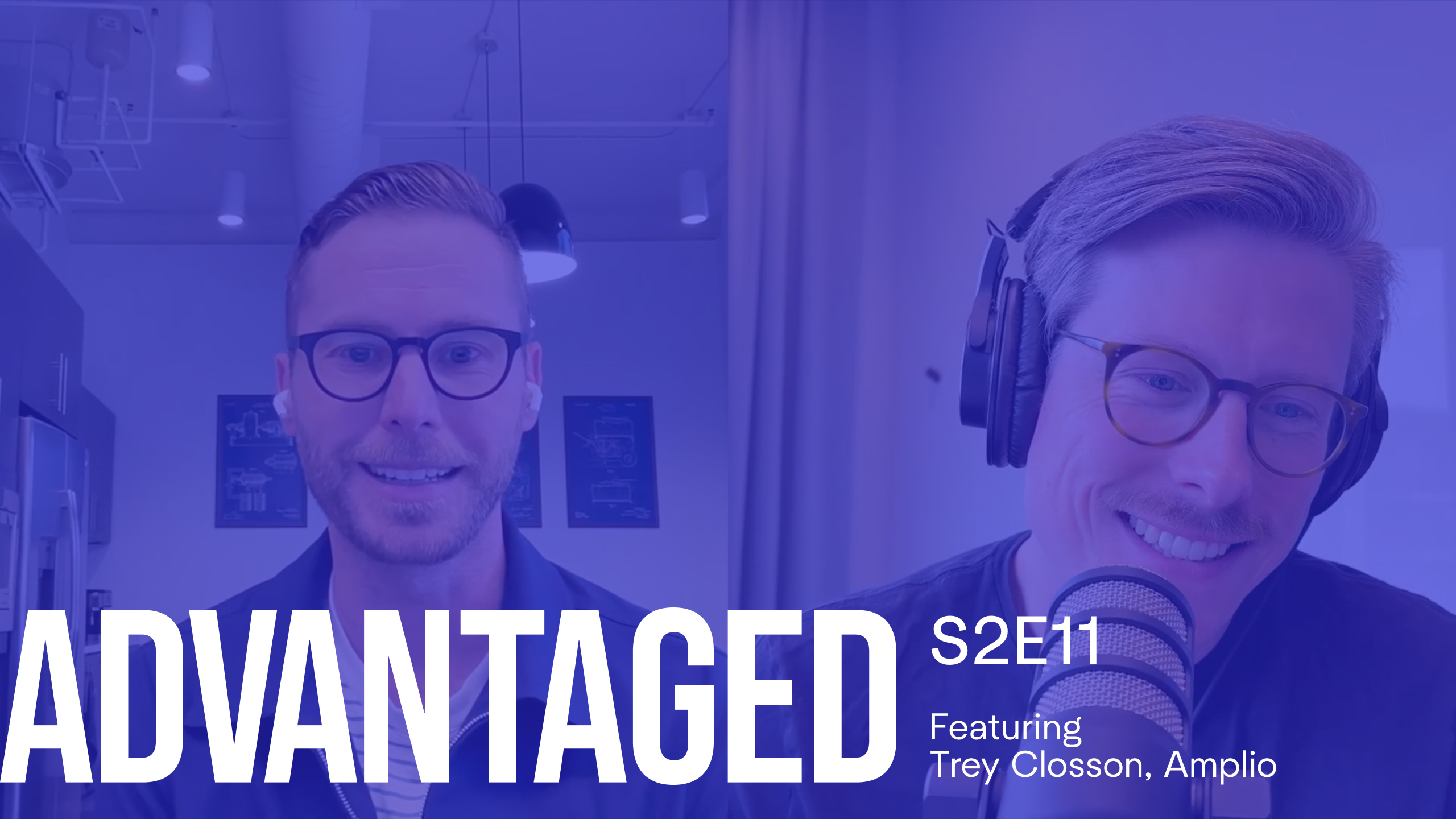


.png)
